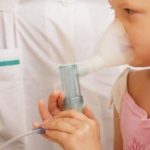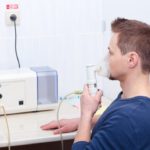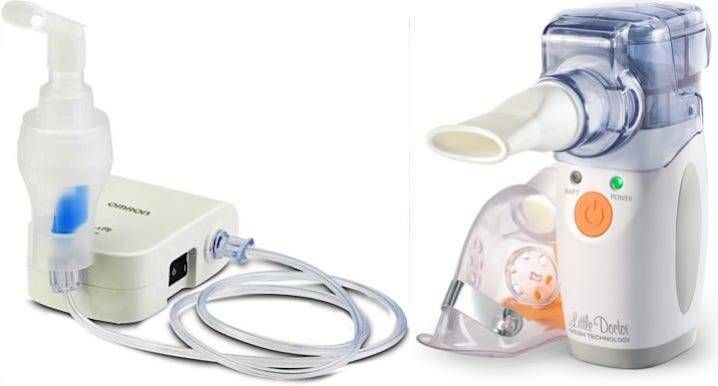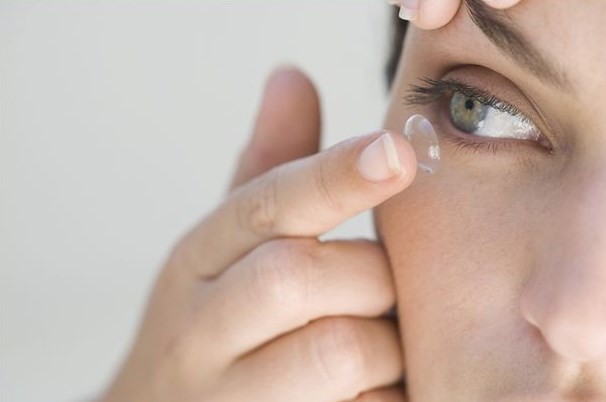How to use the inhaler
Inhalation will bring a therapeutic effect with the correct use of household inhalers.
To get the maximum result from inhalation, you must follow the basic rules of the procedure.
The content of the article
Preparing the device
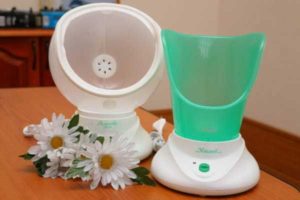 Before use, it is necessary to carry out antibacterial treatment of all parts of the household appliance.
Before use, it is necessary to carry out antibacterial treatment of all parts of the household appliance.
Processing methods:
- Wiping elements with a disinfectant solution. Hydrogen peroxide (3%) can be used as a solution. You can combine peroxide with a small amount of detergent (0.5%). After wiping, each part is thoroughly washed with clean water.
- Boiling removable parts of the inhaler.
Preparation of the drug
The substance that will be used for the procedure must be heated to a temperature slightly higher than the body temperature of a healthy person - up to 38–39°. Warm medicine will ensure that warm steam enters the body, which is useful for colds.
Refilling the device
After assembly, the inhaler is filled with warm medicine.
IMPORTANT: Assembling the device should only be done with clean hands; measuring spoons or medicine pipettes should be disinfected.
Carrying out inhalation
Patient position
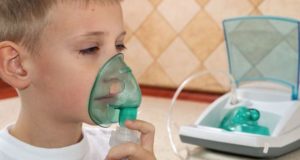 To carry out the procedure, the patient must sit down, take an even position, and relax. He should not feel any discomfort or stiffness. Before turning on the device, you need to tune in to calm, deep breathing, which ensures a uniform flow of medicine into the body.
To carry out the procedure, the patient must sit down, take an even position, and relax. He should not feel any discomfort or stiffness. Before turning on the device, you need to tune in to calm, deep breathing, which ensures a uniform flow of medicine into the body.
Using the device
During the procedure, the inhalation mask should be connected as tightly as possible to the skin of the face. If some distance has formed in a particular area, you can hold the mask with your hands to reduce the gap. If there is a tube (mouthpiece), it must be placed between the teeth, tightly clasped with the lips.
Important! The procedure must be carried out silently. Conversations during inhalation are not allowed.
Procedure time
Inhalation lasts about 15–20 minutes.
Completing the procedure
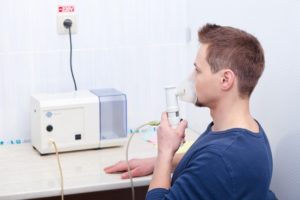 To enhance the effect of the drug that entered the body during inhalation, after inhalation, the patient should not proceed to active physical activity. Rest after completion of the session should not be less than 10 minutes. You should not immediately (in less than 60 minutes) go outside during the cold season.
To enhance the effect of the drug that entered the body during inhalation, after inhalation, the patient should not proceed to active physical activity. Rest after completion of the session should not be less than 10 minutes. You should not immediately (in less than 60 minutes) go outside during the cold season.
After inhalation, it is important to pour out any remaining substance from the device and rinse all its parts with clean water.
How to administer inhalation to a child yourself
When conducting a treatment session, the child must follow all the basic rules of the procedure.
Important! When treating a child, the inhaler can be used only after consultation with a doctor who, taking into account the specific condition of the patient, will prescribe the substance, its quantity and duration of operation of the device.
Tips for performing inhalation for an infant:
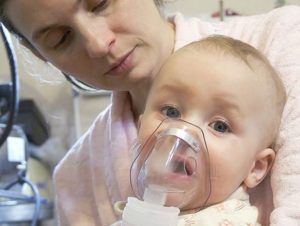 If your baby is sick and the pediatrician recommends inhalation, you should use a nebulizer without a mouthpiece, with an inhalation mask.
If your baby is sick and the pediatrician recommends inhalation, you should use a nebulizer without a mouthpiece, with an inhalation mask.- It is most convenient to carry out the procedure for the baby together. Then one adult will be able to hold the baby horizontally, and the other will hold the mask so that the baby breathes medicinal vapors. You can also carry out the procedure while the child is sleeping.
- It is important to choose the right inhalation time. It should not be done directly after feeding. The optimal interval between feeding and inhalation is 60 minutes.
- The temperature of the solution for inhalation is no more than 30°.
- The procedure time is up to 3 minutes.
- After the end of the session, you should not immediately feed the baby, and you should not immediately walk or play with the baby.
Important! During inhalation, it is necessary to monitor the baby's temperature. When the temperature rises, the procedure is stopped.
How to use a pocket inhaler
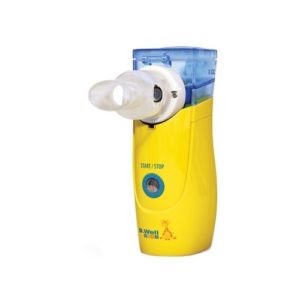 A pocket inhaler is a device convenient for quickly relieving breathing in case of bronchial asthma or other diseases.
A pocket inhaler is a device convenient for quickly relieving breathing in case of bronchial asthma or other diseases.
A special feature of the operation of pocket devices is the delivery of medicine in certain doses. Each dose is released with the next click on the aerosol can. In this case, remove the cap from the mouthpiece and insert it into the mouth.
Important! You need to press the canister while inhaling slowly. To inhale more deeply, you need to exhale deeply before placing the mouthpiece in your mouth.
Inhalation for colds (runny nose, cough, bronchitis)
An important point in inhalation is the selection of the drug.
With a runny nose
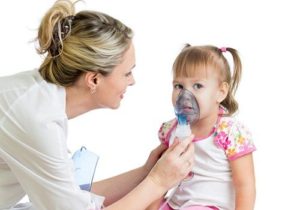 To relieve swelling and soften the mucous membrane, it is useful to use alkaline water. To prepare it you need to stir 1 tsp.baking soda in 1 tbsp. water.
To relieve swelling and soften the mucous membrane, it is useful to use alkaline water. To prepare it you need to stir 1 tsp.baking soda in 1 tbsp. water.
Filling the device with the antiseptic drug “Chlorophyllipt” in combination with saline solution, as well as using “Furacilin”, gives a good effect.
When coughing
Alkaline solutions, such as Borjomi, will also help get rid of phlegm during a cough.
After consulting a doctor, you can use mucolytic drugs such as Ambrobene, Lazolvan, etc.
For bronchitis
Substances from the bronchodilator group, as well as mucoliptics, are used to treat bronchitis. It is also possible to use antibiotics and antivirals.
Important! Specific prescriptions for inhalation during bronchitis can only be made by a doctor, taking into account the patient’s condition and compatibility with other medications.
In what cases should inhalers not be used?
Contraindications for inhalation:
- You should not use the device if you have the following symptoms: fever (more than 37.5°), dizziness, low blood pressure.
- Refrain from inhalation in case of acute pneumonia, colds accompanied by a severe cough.
- Hypertension, cardiovascular problems, and heart failure are also reasons for refusing inhalations.
Following simple rules for inhalation will help alleviate the condition and speed up recovery.

